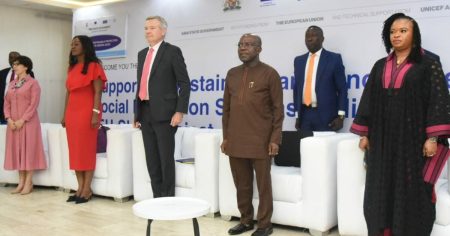Salisu Ahmed, a 66-year-old Nigerian man, recently shared his profound journey of living with Human Immunodeficiency Virus (HIV) for 31 years in an interview with reality star Doyin David. Ahmed disclosed that he contracted the virus following his first extramarital affair, highlighting how the stigma and repercussions surrounding HIV have deeply affected his life. His revelations underscore a broader narrative about the societal perceptions of HIV in Nigeria, where many individuals living with the virus face discrimination and isolation from their communities. Ahmed’s story sheds light on the often invisible struggles that come with living with HIV, as he faced not only health challenges but also significant social consequences.
During his three decades with the virus, Ahmed encountered numerous hardships. He expressed deep emotional pain as he described being ostracized from basic facilities. He revealed that he was barred from using the communal bathroom and toilets in his residence, which led to a sense of isolation. Additionally, his professional life was significantly affected when he was honorably dismissed from his teaching job, a position he had dedicated himself to for many years. Ahmed’s familial relationships also suffered; his wife left him, taking their children, leaving him to grapple with both the physical and emotional burdens of HIV without familial support. This abandonment and societal rejection exemplify the severe stigma attached to HIV/AIDS, which remains prevalent in many communities worldwide.
Ahmed’s account also serves as a testament to the need for increased awareness and education regarding HIV transmission and treatment. He pointed out that a significant percentage of people living with HIV contracted the virus through sexual intercourse, emphasizing the importance of sexual health education to prevent new infections. His personal narrative illustrates a critical perspective that many individuals in his situation endure—an avenue that opens discussions about the necessity of addressing public misconceptions surrounding HIV. Such misunderstandings not only affect individuals’ willingness to seek treatment but also perpetuate harmful stigmas that result in exclusion and isolation.
In a remarkable turn of events, Ahmed achieved long-term remission from HIV following a groundbreaking stem cell transplant he underwent at the City of Hope Medical Center in the United States. The medical team confirmed that after halting his antiretroviral therapy, he entered remission, becoming the oldest and fourth person globally to attain such a significant milestone. Ahmed’s case highlights the advancements in medical technology and treatment options for HIV, showcasing a glimmer of hope for numerous individuals affected by the virus. His journey through treatment and eventual remission emphasizes the importance of ongoing research and innovation in the fight against HIV/AIDS.
The successful outcome of Ahmed’s stem cell transplant symbolizes the potential for curative therapies to transform the narrative surrounding HIV. While antiretroviral therapy remains a vital lifesaving treatment that enables many to manage the virus, the pathway to a potential cure offers hope for the future. Ahmed’s journey from diagnosis through years of battling stigma to eventual remission can inspire many others, reinforcing that there is a possibility of reclaiming health and dignity beyond HIV. His story not only illuminates the personal struggles faced by many living with the virus but also advocates for continued research into viable solutions that could benefit countless individuals worldwide.
In conclusion, Salisu Ahmed’s story is a powerful reminder of the multifaceted challenges faced by those living with HIV, especially in societies where stigma prevails. His experience encapsulates the emotional, social, and professional turmoil that accompanies the virus, drawing attention to the urgent need for education and empathy regarding HIV/AIDS. With his recent medical triumph, Ahmed offers hope not only for himself but for millions of others facing similar circumstances. His narrative encourages a broader societal dialogue on changing attitudes towards HIV, fostering support, and understanding as crucial factors that can lead to a more inclusive world.














